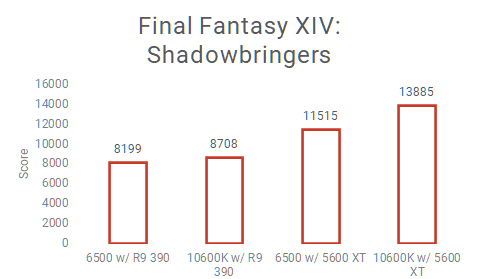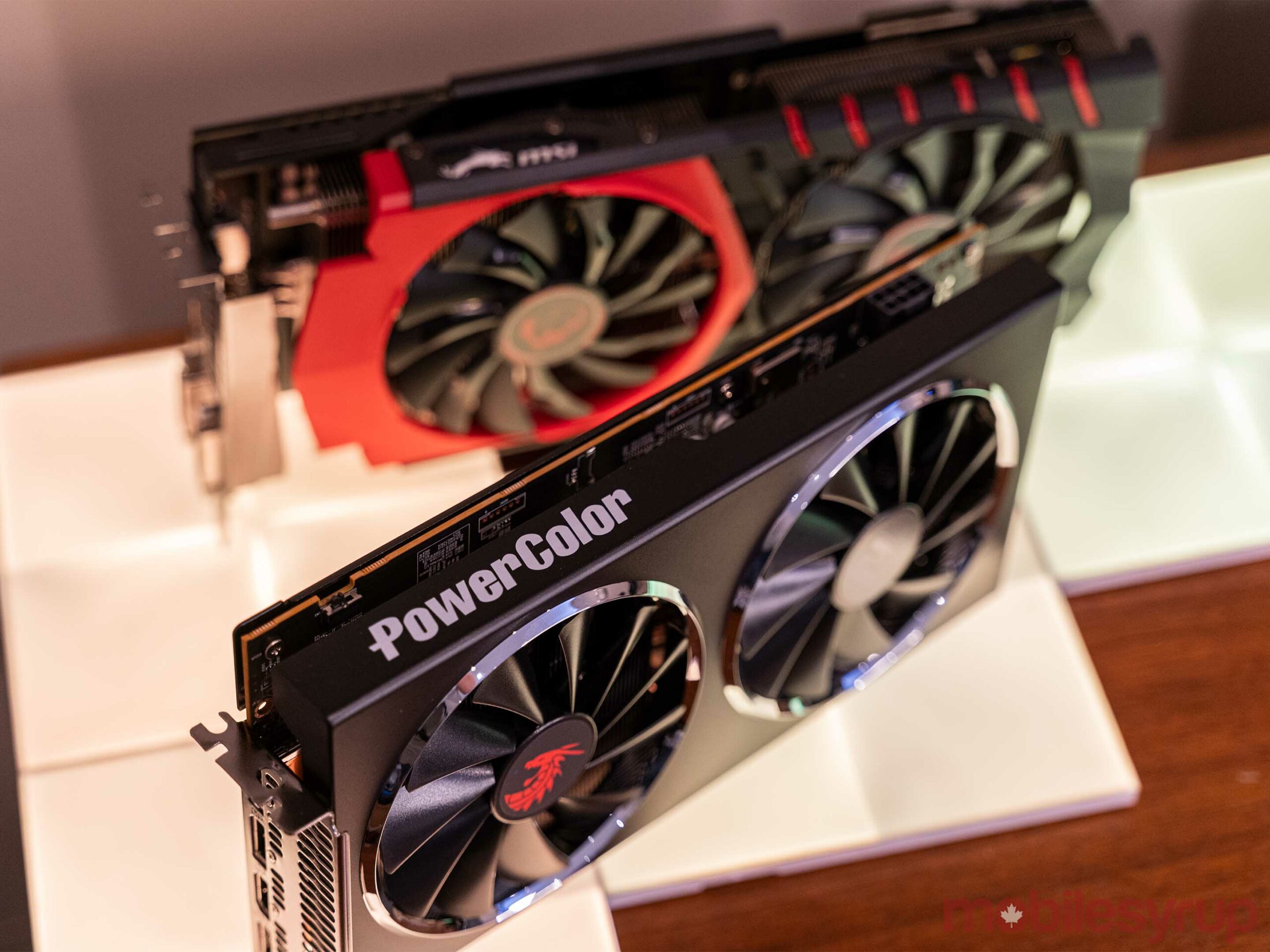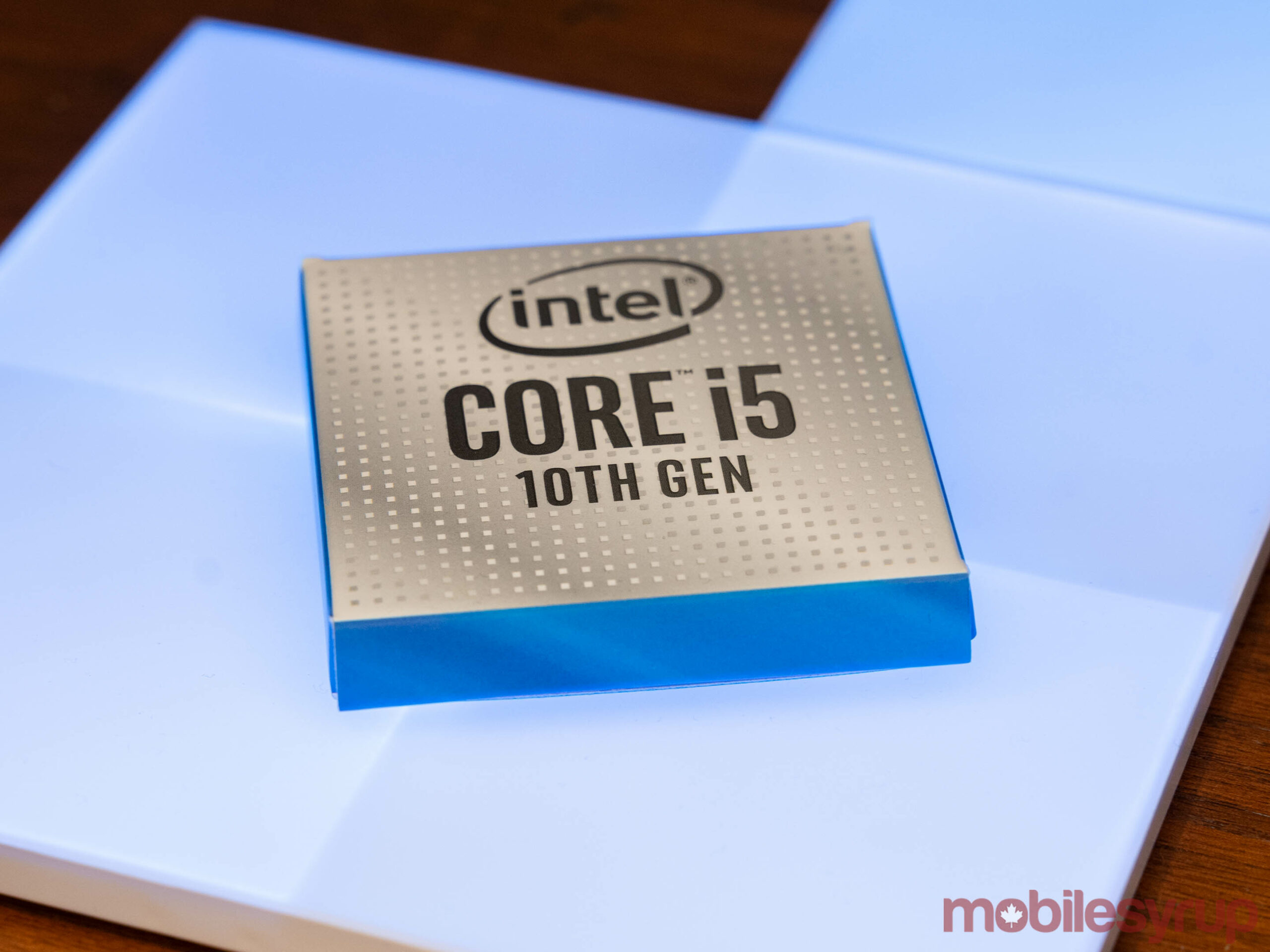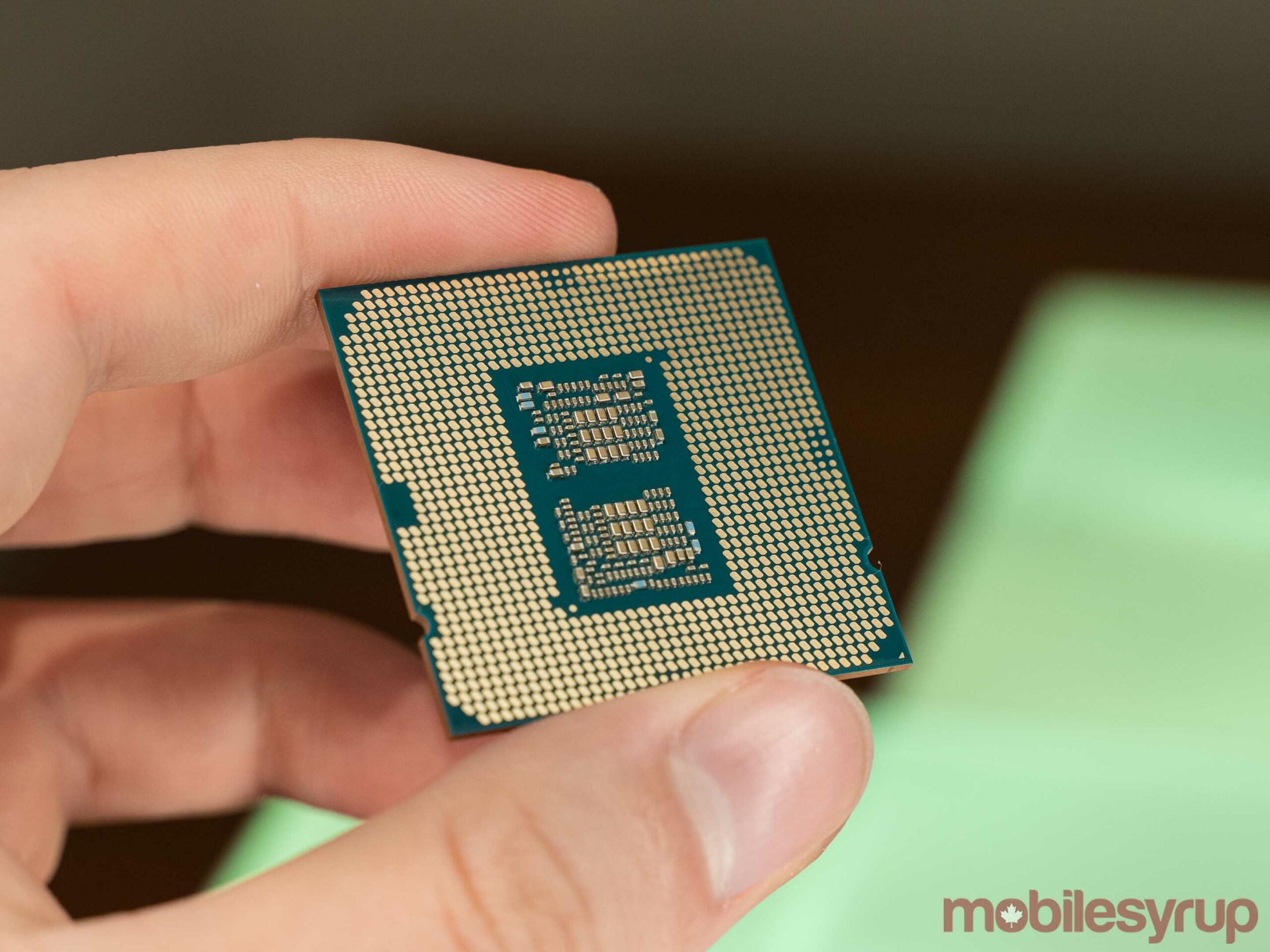Tech
Swapping my GPU gave a bigger performance boost than expected – MobileSyrup

About four years ago, I decided to build a computer. Primarily I designed it for playing games, but in the last four years it has served well for a variety of purposes, from editing photos for work to taking a run at Twitch streaming to even briefly mining cryptocurrency.
However, as versatile as the computer was, it wasn’t perfect. It was my first PC build after all and, at the time, I made a few mistakes. Ultimately, those lead me to my current position: an ageing PC in need of an upgrade and no clear path forward.
Recently, I received some of Intel’s latest 10th Gen desktop processors to review — you can read about those over here. It seemed like perfect timing. I was preparing to figure out how to move forward with upgrading my PC since doing a full system rebuild wasn’t feasible for me. Since I was testing the new i5-10600K anyway, I figured it was the perfect chance to see which component upgrade would give me the biggest boost in performance.
The issues with my computer
In short, the biggest problem with my current PC was that it was struggling to hit the performance I was looking for, especially with modern games.
One particular issue I noticed was that in several games, CPU usage was quite high while the GPU seemed much more sporadic. This indicated to me that, at least in some games, my 6th Gen Intel Core i5-6500 CPU just wasn’t keeping up.
I began considering upgrading my CPU to eke out some more performance in those games but discovered my motherboard would only support up to 7th Gen Intel CPUs with a BIOS update. To me, it didn’t seem worthwhile to make that jump. And if I had to replace the motherboard, I figured rebuilding the whole PC would make the most sense.
However, with the new 10600K I was reviewing, I had the means to test performance and see if a new CPU would really make that much of a difference. Likewise, I needed to see what difference swapping out the GPU would make in my scenario. AMD suggested a Radeon 5600 XT as a logical upgrade from the R9 390 for someone looking to game at 1080p.
Once I had both components, I began testing. I ran a suite of benchmarks across four configurations of the system, including the original i5-6500 with an R9 390, the 6500 with the Radeon 5600 XT, the i5-10600K with the 390 and the 10600K with the 5600 XT. Everything else in the system remained the same — 16GB of RAM, 128GB SSD with Windows plus other drives with the games I tested. The only real difference between the two other than CPU and GPU configuration was the motherboard since the 10th Gen CPUs use a different socket. However, that should not significantly impact any performance metrics.
Before we dig into the results, keep in mind that the focus here is on game performance and what benefits a new CPU and new GPU bring to the table. If you’re curious about a direct comparison between the new 10600K and the 6500, check out the full 10th Gen CPU review here.
CPU makes a difference, but a GPU does more to improve your game


Starting with the synthetic GPU benchmarks, you can see the systems running the newer 5600 XT clearly perform better while the CPU makes a marginal difference. This shouldn’t come as much of a surprise as these benchmarks specifically test the GPU performance. Still, the 10600K system does see a tiny improvement in every test with the exception of the FurMark score with the 390, where it comes in slightly lower than the 6500/390 system, but maintains the same framerate.


Likewise, CPU benchmarks I tried showed no difference in performance between the systems with the 390 and systems with the 5600 — only the CPU made a difference here.


The game benchmarks, however, show a different story. When both components have to work in tandem, a clear delta appears between the different configurations. In almost every test, the 10600K configurations out-performed the 6500 versions. However, the 6500/5600 XT config bested the 10600K/390 and, unsurprisingly, the 10600K paired with the 5600 XT scored best across all tests.
The first round of tests used the games’ built-in benchmarking tool, while the second round simply recorded the average framerate through a few rounds of Battlefield V’s ‘Breakthrough’ game mode and Warzone’s solos mode. The third graph is the Final Fantasy XIV: Shadowbringers benchmark, which provides a score instead of an average framerate, so it’s set apart accordingly.


Looking at these results, it becomes abundantly clear that, in most games at least, the 6500 was not the main cause of performance issues, regardless of the high CPU usage. If the 6500 was the culprit, then the tests with the 6500/5600 XT pair shouldn’t have seen as big an increase in framerate as they did.


What the benchmarks don’t show


Despite the performance deltas displayed in the tests above, there are more things to consider when it comes to upgrading a part of your PC. Yes, upgrading the GPU lead to better framerates compared to upgrading the CPU, but I do more than just game with my computer.
It’s worth noting that the configurations with the 10600K felt much snappier in almost everything. Whether navigating Windows 10, browsing the web, working or editing photos, the 10600K configs were always faster.
Likewise, the 5600 XT brought some significant benefits over the 390. For one, it uses a 7nm process compared to the 28nm used in the 390. The new RDNA architecture in the 5600 is more power efficient as well and I found it was able to run much cooler under load than the 390. Thanks to the improvements in AMD’s Adrenalin 2020 Edition software, newer GPUs like the 5600 XT have more options when it comes to overclocking as well.
Drawbacks to consider when swapping hardware


Also worth considering are the drawbacks to upgrading either component. Despite the excellent performance I got from the 5600 XT, I initially had some glitches and crashes. At first, I thought Windows just wasn’t a fan of swapping the GPU. After some troubleshooting and back-and-forth with AMD, it turned out to be related to an older vBIOS installed on the GPU. After updating the vBIOS, everything worked fine.
On the CPU side of things, in my case, upgrading to a new CPU required a whole new motherboard. Changing that is not only an added expense but also a lot of work since you’ll have to essentially rebuild your PC instead of just swapping one component. Not every computer will be in the same boat as mine, however, and if you feel a CPU upgrade is the way to go, make sure to check your motherboard compatibility. With a BIOS or similar software update, you may be able to keep the motherboard and just swap the hardware.


If you opt to upgrade the motherboard and CPU, be prepared for some software bugs. Along with the GPU software issues mentioned above, when I swapped motherboards in my test rig, the audio completely stopped working. In part, this was because something broke somewhere in Windows and I believe it was trying to use the old audio drivers despite cleaning them out and installing the new drivers. It’s also partially because the new motherboard’s audio drivers have some software bugs that need to be worked out.
None of this is to disparage the hardware I tested, but instead to make it clear that, regardless which component you choose to upgrade in an ageing rig, you should be prepared for something to break.
If you can’t afford a full system upgrade, swapping a GPU could give you a boost


Ultimately, the experiment answered my questions about upgrading specific components of my build.
In my case, I likely could upgrade my GPU to something like the 5600 XT, which you can find for as low as $409 depending on the variant, and get a significant performance boost. While I can’t say for sure, I’d guess the 6500/5600 XT pairing could likely carry me through another year or two of gaming no problem.
The 10600K, however, would likely leave me in the same position I am now without a corresponding GPU upgrade. Considering the 10600K retails for $399, it’s clear where that money should go.
All that said, upgrading both would by far improve performance across the board in both gaming and work tasks.
Since every computer system is different, your mileage may vary. That said, if you’re considering upgrading but can’t go for a full system upgrade, a newer graphics card can definitely help boost your game performance.
Tech
Nothing Ear And Nothing Ear (a) Earbuds Are 1st With ChatGPT Integration – Forbes


London-based Nothing Tech has just launched new earbuds, two pairs, in fact. The Nothing Ear and more affordable Nothing Ear (a) have just gone on sale—you can read Forbes contributor Mark Sparrow’s review of both pairs here. And now, the company has announced a cool new feature: and industry-first integration with ChatGPT. It comes with strings, though.
The new earbuds have just been announced and are available to pre-order from nothing.tech now and go on sale from Monday, April 22. If you’re in London, and you want to be among the very first to get the earbuds, you can snap them up in the Nothing Store Soho a little bit sooner, from Saturday, April 20 (click-and-collect is available).
From launch, the company said, “it will enhance its overall user experience with industry-first ChatGPT integrations in its audio and smartphone products.”
Nothing goes on that it wants “to advance consumer tech products’ transition to AI, as well as simplify and enhance the user experience.”
It means users will be able to pinch the earbud to directly speak to ChatGPT to ask questions and hear responses in the earbuds. Nothing is also introducing new elements to Nothing phones, such as widgets which make it easy to talk to ChatGPT on the handsets. Other features include being able to send screenshots directly to ChatGPT and a clipboard shortcut for sending text.
So, what are the catches?
Although the Bluetooth new earbuds will work with any iPhone or Android phone, and there are dedicated Nothing apps for each platform, the ChatGPT integration is more limited for now.
function loadConnatixScript(document)
if (!window.cnxel)
window.cnxel = ;
window.cnxel.cmd = [];
var iframe = document.createElement(‘iframe’);
iframe.style.display = ‘none’;
iframe.onload = function()
var iframeDoc = iframe.contentWindow.document;
var script = iframeDoc.createElement(‘script’);
script.src = ‘//cd.elements.video/player.js’ + ‘?cid=’ + ’62cec241-7d09-4462-afc2-f72f8d8ef40a’;
script.setAttribute(‘defer’, ‘1’);
script.setAttribute(‘type’, ‘text/javascript’);
iframeDoc.body.appendChild(script);
;
document.head.appendChild(iframe);
loadConnatixScript(document);
(function()
function createUniqueId()
return ‘xxxxxxxx-xxxx-4xxx-yxxx-xxxxxxxxxxxx’.replace(/[xy]/g, function(c) 0x8);
return v.toString(16);
);
const randId = createUniqueId();
document.getElementsByClassName(‘fbs-cnx’)[0].setAttribute(‘id’, randId);
document.getElementById(randId).removeAttribute(‘class’);
(new Image()).src = ‘https://capi.elements.video/tr/si?token=’ + ’44f947fb-a5ce-41f1-a4fc-78dcf31c262a’ + ‘&cid=’ + ’62cec241-7d09-4462-afc2-f72f8d8ef40a’;
cnxel.cmd.push(function ()
cnxel(
playerId: ’44f947fb-a5ce-41f1-a4fc-78dcf31c262a’,
playlistId: ‘aff7f449-8e5d-4c43-8dca-16dfb7dc05b9’,
).render(randId);
);
)();
The earbuds must be paired with a Nothing handset. From today, the feature works with the premium model, the Nothing Phone (2), providing it’s running the latest software. The earlier Nothing Phone (1) and more recent, more affordable model, Nothing Phone (2a) will need to wait for a software update, which Nothing says is “coming soon”.
Also coming in the future is compatibility with earlier Nothing earbuds, that is the Ear (1), Ear (2) and Ear (Stick).
The new earbuds are very keenly priced. Ear costs $149 (£129 in the U.K.), while Ear (a) is $99 (£99 in the U.K.). Both pairs have active noise-cancelling, which is not commonplace at this price point. The more expensive Ear has a wireless charging case and a feature to create a personal sound profile. Both pairs come in black and white finishes, with Nothing’s trademark transparent design in the earbuds and charging case. But the Nothing Ear (a) has an eye-catching extra: a tremendous yellow-finish option.
Tech
U of T Engineering PhD student is working to improve the sustainable treatment of Ontario's drinking water – U of T Engineering News – U of T Engineering News


Growing up in a small neighbourhood in Cameroon, Maeva Che (CivMin PhD student) was aware of challenges of accessing clean drinking water.
“Experiencing that exposure to water issues and challenges with sustainable access to safe drinking water ignited my interest in water treatment,” Che says.
Che’s drive to improve water quality around the globe brought her to the Drinking Water Research Group (DWRG) at University of Toronto’s Faculty of Applied Science & Engineering, where she is researching innovative solutions to address local water issues.
Che is working under the supervision of Professor Ron Hofmann (CivMin), who is a member of the DWRG. Her research focuses on removing unpleasant taste and odour compounds in Ontario’s drinking water by promoting the biodegradation of these compounds through granular activated carbon (GAC) filtration.
The project is supported by a five-year Natural Sciences and Engineering Research Council of Canada (NSERC) Alliance grant called Advanced and Emerging Issues in Drinking Water Treatment.
GAC filtration is a water treatment process that uses granular activated carbon, which is made from organic materials that are high in carbon, such as wood, coal or coconut shells. These materials are heated in the absence of oxygen through a process known as pyrolysis and prompted chemically or physically to produce the activated carbon. The activation enhances the material’s adsorption properties, making it productive to remove contaminants from water.
While GAC filtration is an effective treatment process, its adsorptive capacity is limited. The adsorptive capacity of GAC is expected to become exhausted after about three years in service and drinking water treatment utilities must replace the GAC. Aside from the inconvenience, replacing GAC is costly.
Che is working on alternative ways to remove contaminants using GAC filtration, specifically through biodegradation. When the filtration has been in service for a while, there is the growth of micro-organisms on the GAC, which can be useful for removing contaminants.
“Think of biodegradation as the useful bacteria on the GAC feeding on the contaminants in the water, thereby removing them,” says Che.
“If the GAC has enough good bacteria that is biodegrading the compounds, the GAC may not need to be replaced when its adsorptive capacity becomes exhausted. This can extend the filter’s lifetime, resulting in cost benefits for treatment utilities.”
In other words, biodegradation can potentially enhance the performance of GAC filters.
Che and the DWRG will collaborate with water treatment plants to determine methods that can enhance the biodegradation of taste and odour compounds within their GAC filters.
Currently in its initial phase, the project is taking place alongside the Peterborough Utilities Group’s drinking water treatment plant, where Che is conducting pilot-scale filtration studies with support from the Peterborough Utilities Commission. They plan to extend this research to other partner treatment plants in the future.
Working with various water treatment plants across Ontario, Che will also assess the effectiveness of GAC filters in removing non-traditional taste and odour compounds, which are not commonly monitored.
To achieve this, she’ll evaluate filter performance for two common taste and odour compounds — 2-methylisoborneal and geosmin — and eight additional non-traditional compounds that can cause taste and odour events. This involves collecting GAC and water samples from the plants and conducting lab-scale filtration tests, called minicolumn tests. This test, developed by the DWRG, allows to differentiate between adsorption and biodegradation in GAC filters.
Minicolumn tests provide crucial insights into the performance of the GAC filters in terms of the adsorption and biodegradation of contaminants. To distinguish between these mechanisms, researchers use parallel minicolumns. One minicolumn operates under conditions where the biological activity of micro-organisms is suppressed, which isolates the adsorption process. The second minicolumn operates without biological suppression, allowing both adsorption and biodegradation to occur.
“Many plants are unaware of their filters’ performance for other compounds, aside from the two common ones, that also contribute to taste and odour events in water. Our project, therefore, plays a crucial role in expanding the understanding of this,” Che says.
Project partners include the Ajax Water Supply Plant and the Barrie Surface Water Treatment Plant.
The DWRG is made of approximately 30 graduate students, post-doctoral fellows, research managers and associates who collaborate with local, national and international industry and government organizations to address a wide range of projects related to municipal drinking water.
Che credits her experience as a master’s student with the research group as a major factor in her decision to pursue a PhD at the University of Toronto.
“During my master’s degree with the DWRG, I worked on projects that improved drinking water quality, gaining hands-on experience at treatment plants. Seeing the results of my research reinforced my decision to pursue my PhD here,” Che says.
Ultimately, Che hopes to make a significant impact in the field — and the DWRG provides opportunities to achieve this, with a supportive community of researchers and supervisors.
“My goal is to continue researching and developing sustainable solutions for drinking water treatment that benefit communities in need,” she says.
Tech
Huawei's latest flagship smartphone contains no world-shaking silicon surprises – The Register


When Huawei debuted its Mate 60 smartphone in mid-2023, it turned heads around the world after teardown artists found it contained a system-on-chip manufactured by Chinese chipmaker Semiconductor Manufacturing International Corporation (SMIC) using a 7nm process.
SMIC was thought not to be able to build that sort of thing. So while the Mate 60 didn’t differ markedly from every other modern smartphone, its very existence called into question the effectiveness of US-led efforts to prevent advanced chipmaking tech reach the Middle Kingdom.
Much speculation has therefore concerned what Huawei would deliver next, and this week the world got its answer – in the form of the Pura 70.
Chinese media report that early users of the device have posted details of its innards, naming the SoC as Kirin 9010 with four efficient cores running at 1.55GHz, half a dozen performance cores at 2.18GHz, and a couple of high-performance cores zipping along at 2.30GHz. All cores are Arm v8. A third-party spec sheet suggests it’s a 7nm chip – meaning Chinese chipmakers appear not to have made another unexpected advance.
Early tests suggest it outperforms the Kirin 9000 found in the Mate 60, but independent assessments are yet to emerge. The crowdsourced evaluations currently available are sometimes dubious.
What we can say with confidence is that the Pura 70 has a 6.6-inch OLED display with 120Hz refresh rate and resolution of 2,760 x 1,256. It has 12GB RAM aboard, and buyers can choose from 256GB, 512GB, or 1TB of storage.
The three rear-facing cameras on the base models can capture 50, 12, and 13 megapixels apiece.
The Pura range derives from Huawei’s P-Series handsets that stretched from the midrange to the low-end of premium, but are now focussed – pardon the pun – on photography enthusiasts. The device comes on four variants, each priced to match the four editions of Apple’s iPhone 15.
The screen on the high-end “Ultra” model grows to 6.8 inches and 2,844 × 1,260 pixels, with two rear cameras that shoot at 50 megapixels and one at 40. One of the 50MP snappers is retractable, to enhance its zooming powers.
Importantly, all models of the Pura 70 run HarmonyOS 4.2 – Huawei’s not-Android operating system.
China is all-in on HarmonyOS as the nation pursues indigenous alternatives to Western tech. In recent weeks Chinese media and government agencies have noted the growing proliferation of native HarmonyOS apps, trumpeting that developer enthusiasm for the platform means local buyers now have a more patriotic alternative.
That alternative appears to be welcome: after the debut of the Mate 60, analyst firm IDC saw Huawei’s smartphone market share improve by 36.2 percent. ®
-



 Sports23 hours ago
Sports23 hours agoAuston Matthews denied 70th goal as depleted Leafs lose last regular-season game – Toronto Sun
-
Media4 hours ago
DJT Stock Rises. Trump Media CEO Alleges Potential Market Manipulation. – Barron's
-
Business22 hours ago
BC short-term rental rules take effect May 1 – CityNews Vancouver
-
Media6 hours ago
Trump Media alerts Nasdaq to potential market manipulation from 'naked' short selling of DJT stock – CNBC
-
Art22 hours ago
Collection of First Nations art stolen from Gordon Head home – Times Colonist
-



 Investment22 hours ago
Investment22 hours agoBenjamin Bergen: Why would anyone invest in Canada now? – National Post
-



 Tech23 hours ago
Tech23 hours ago'Kingdom Come: Deliverance II' Revealed In Epic New Trailer And It Looks Incredible – Forbes
-
Media18 hours ago
DJT Stock Jumps. The Truth Social Owner Is Showing Stockholders How to Block Short Sellers. – Barron's





